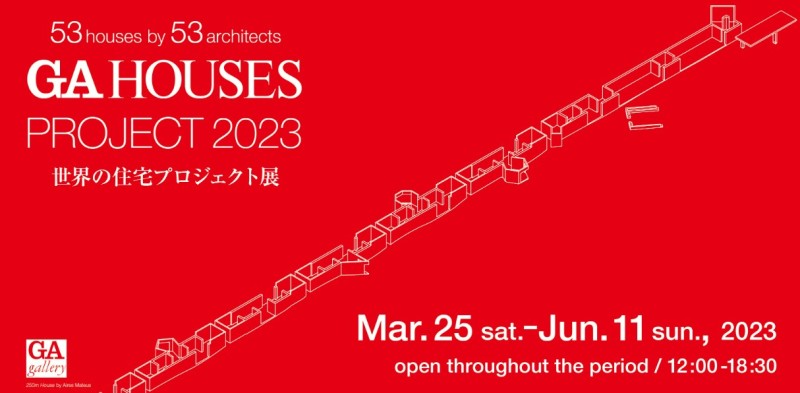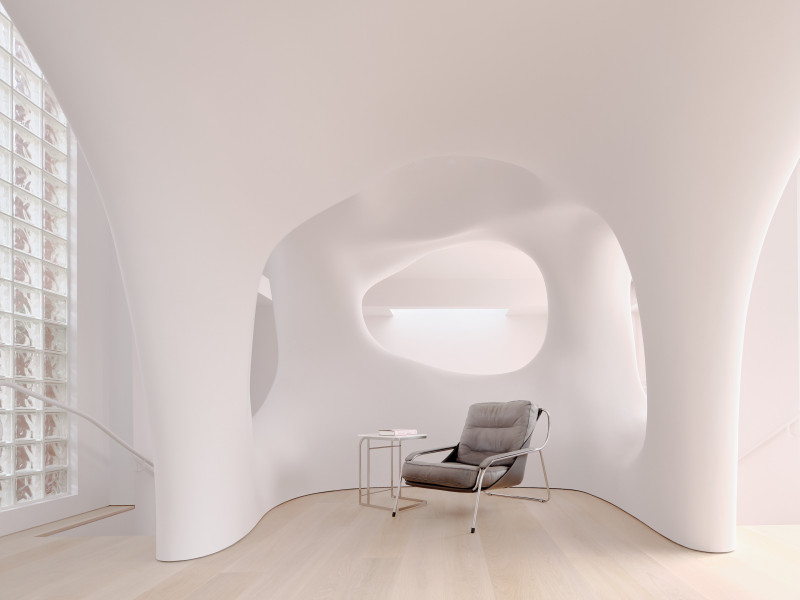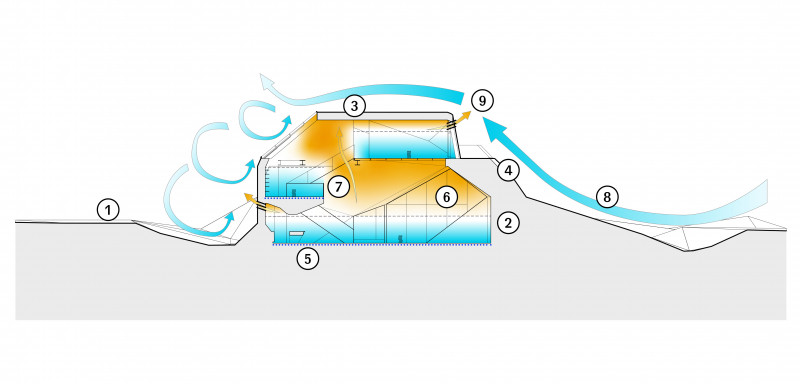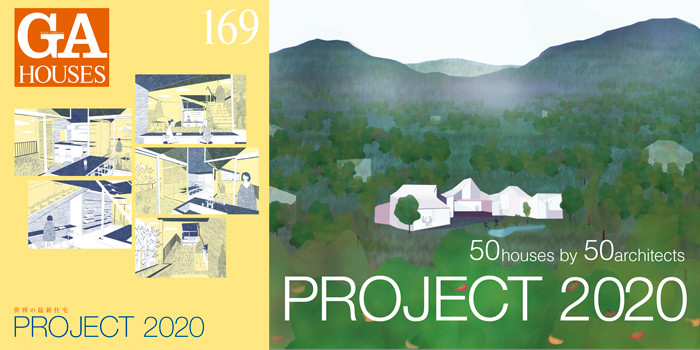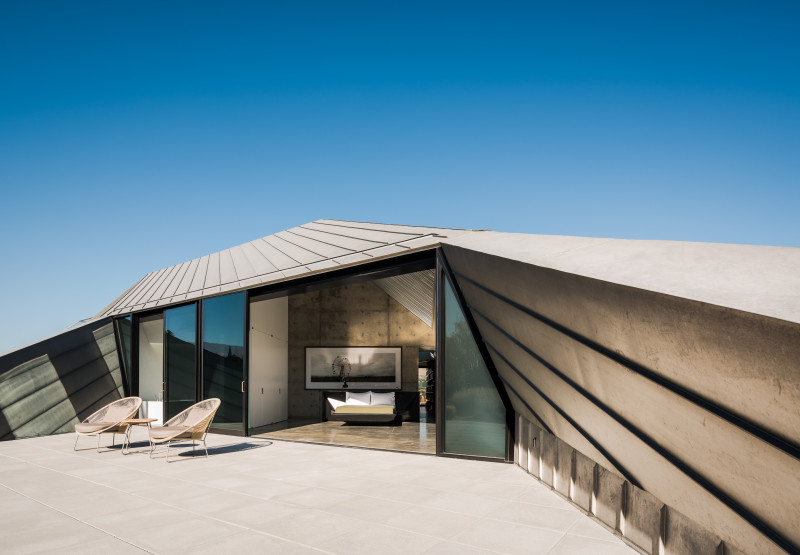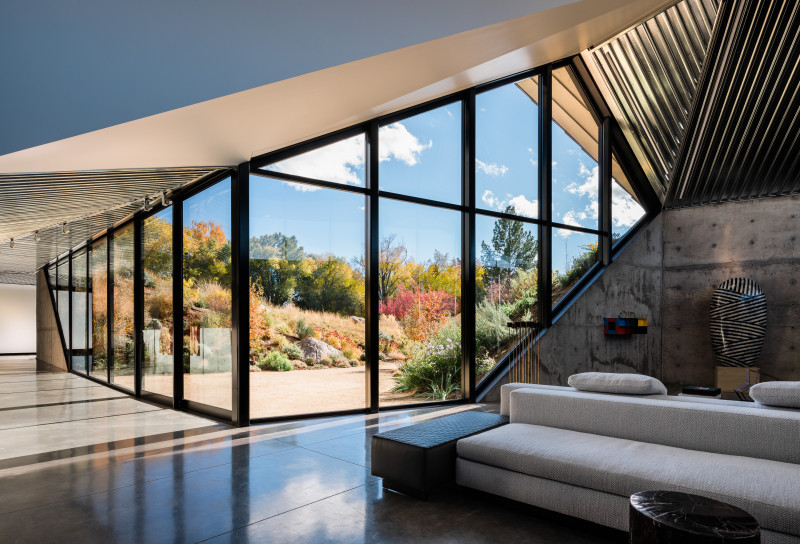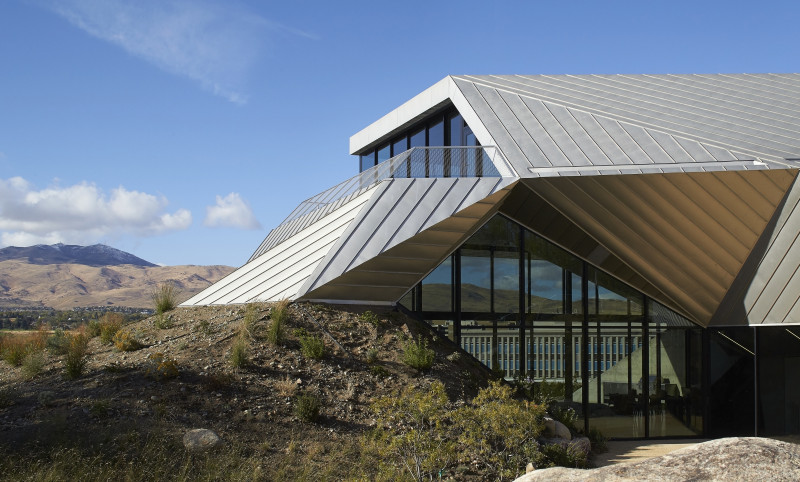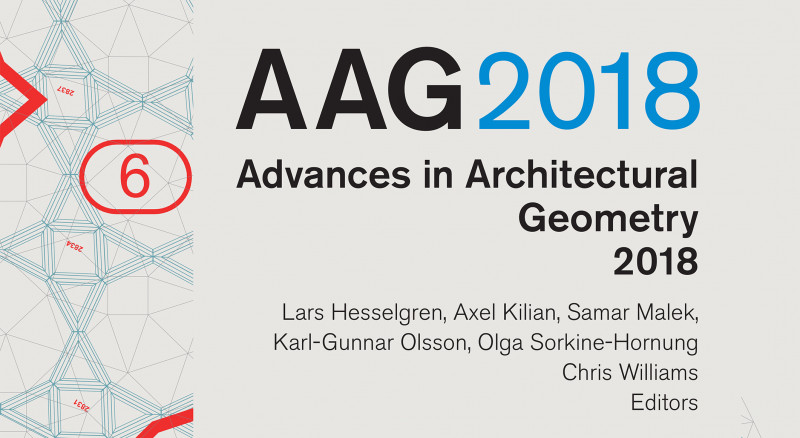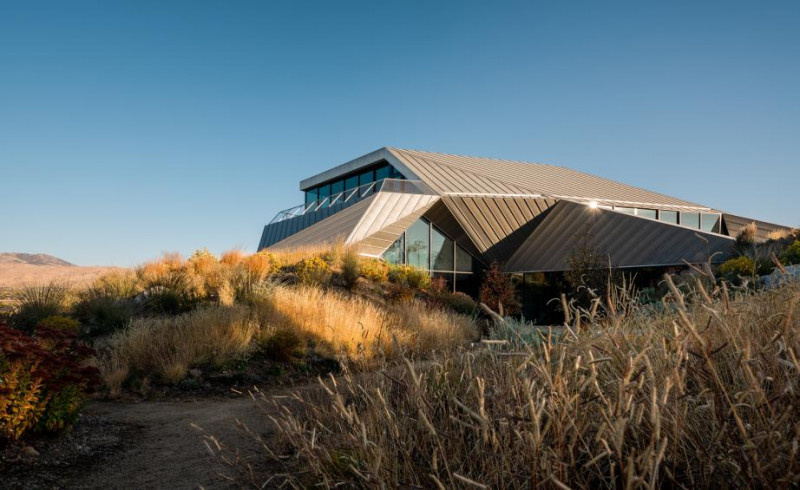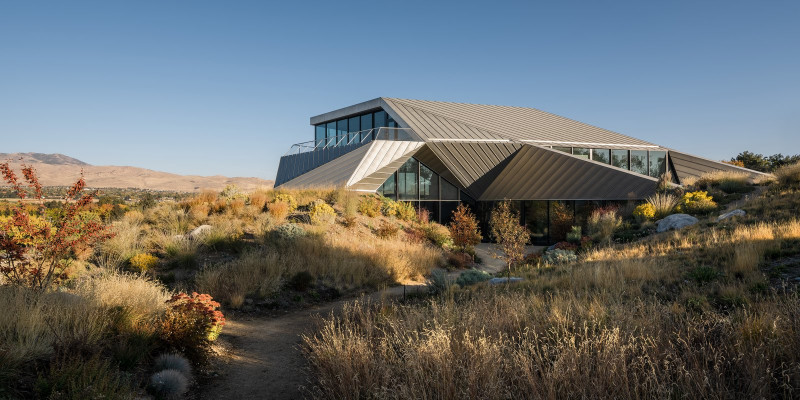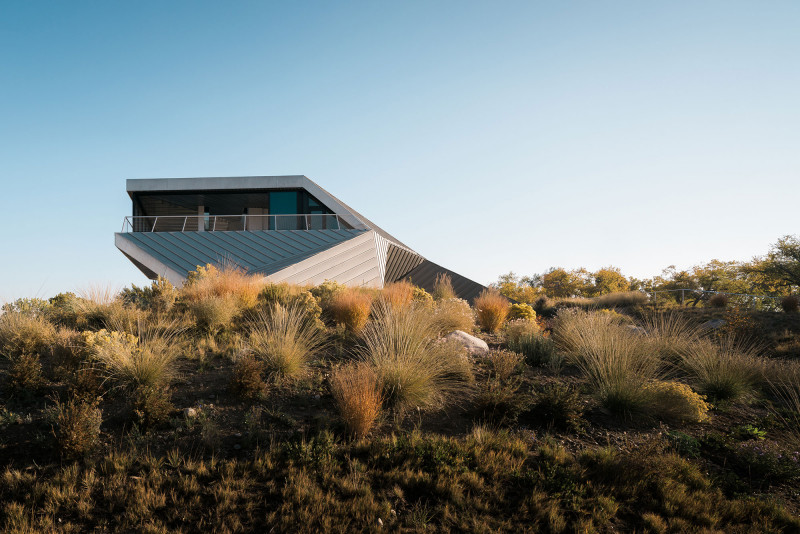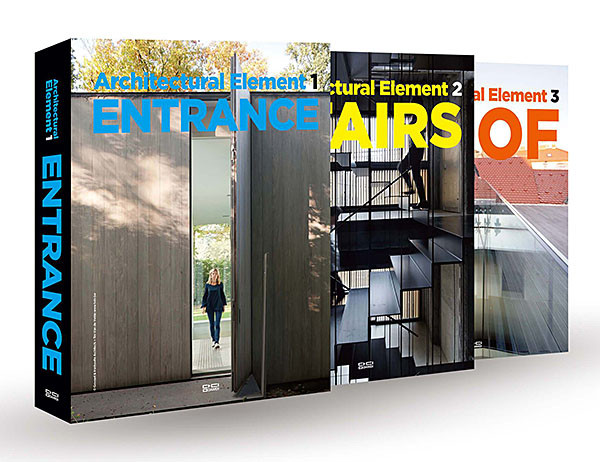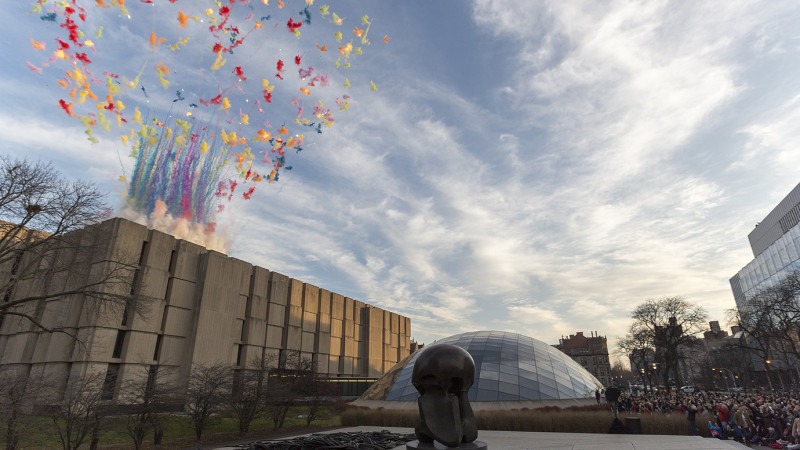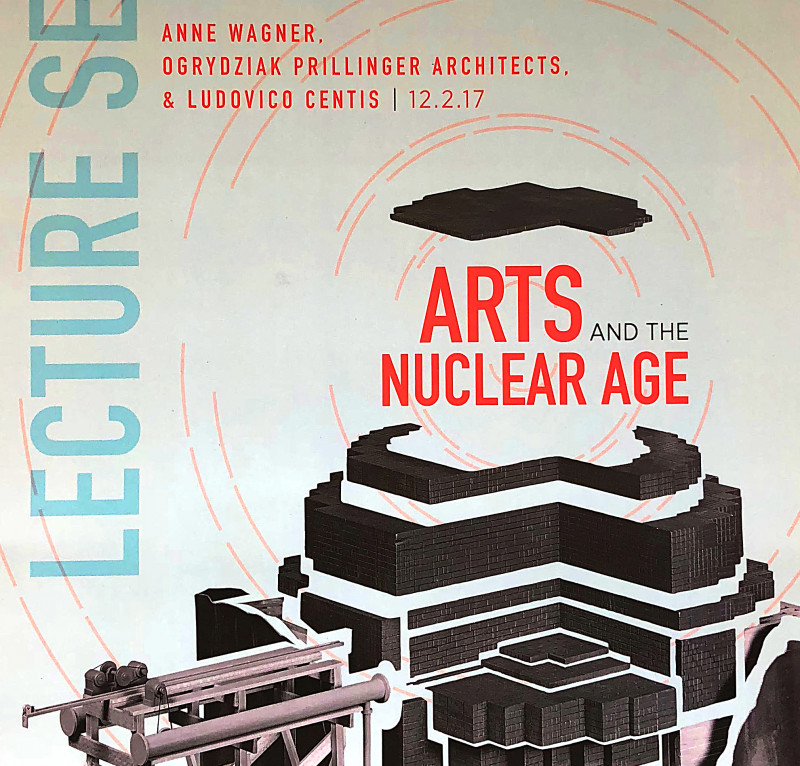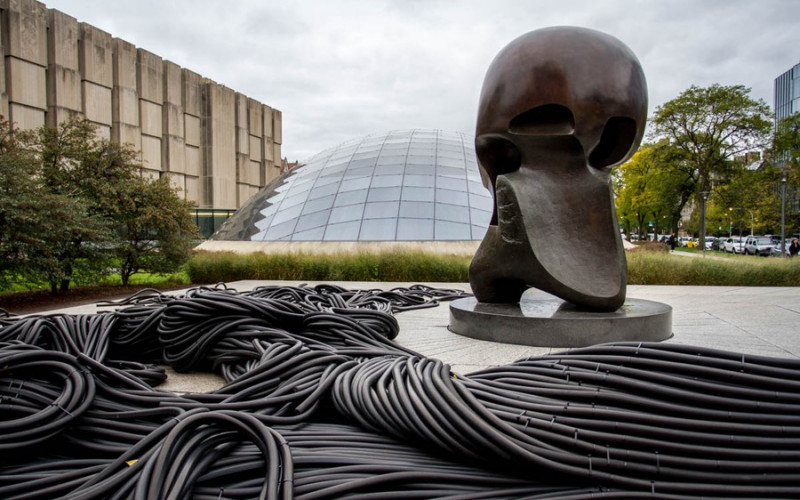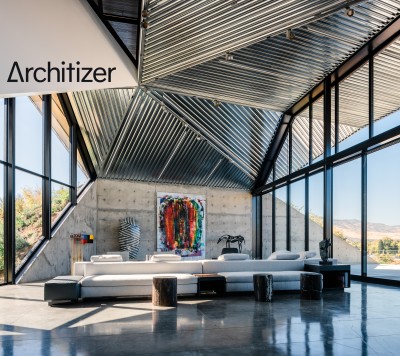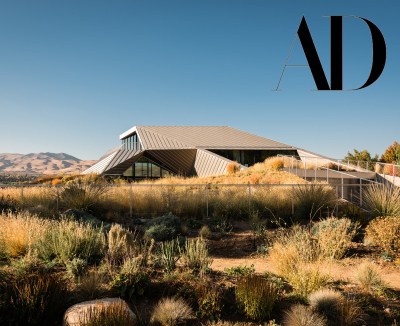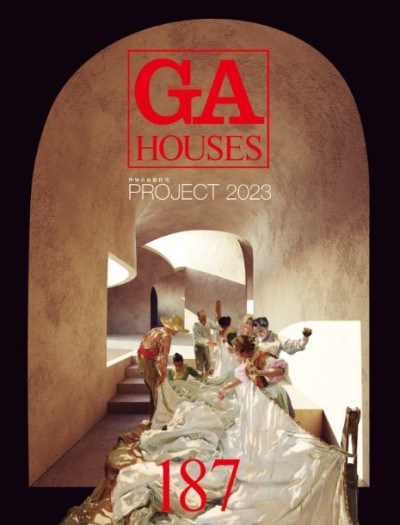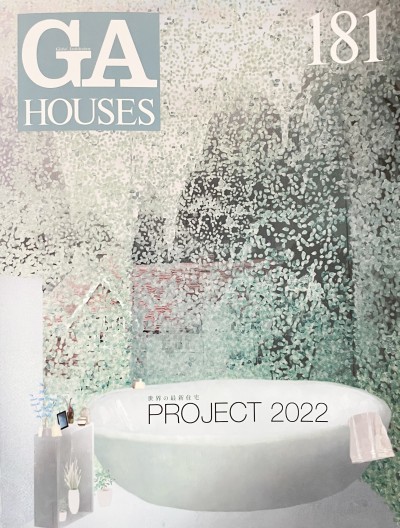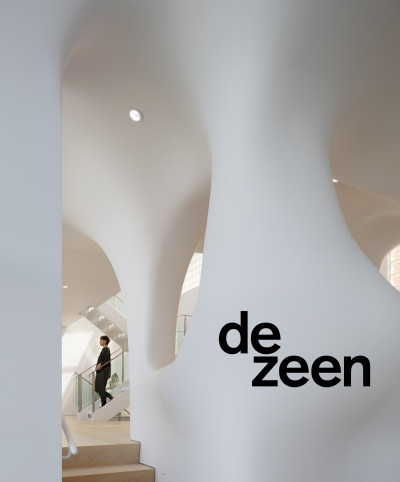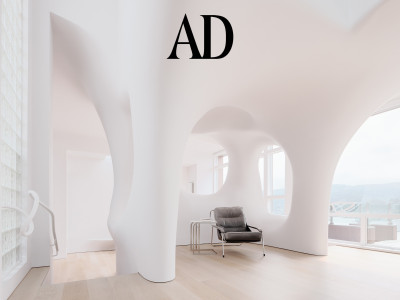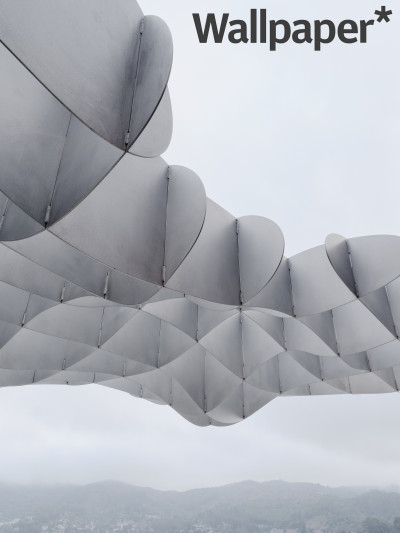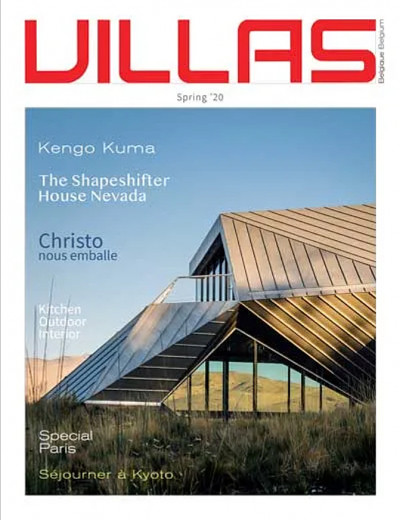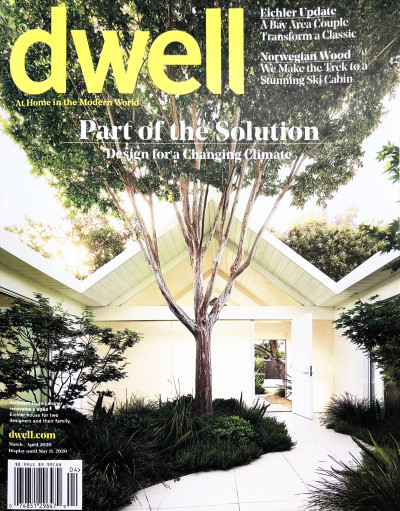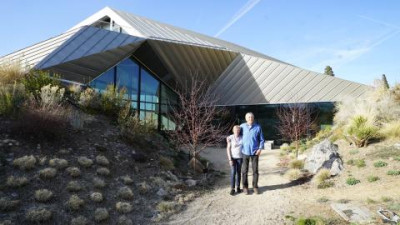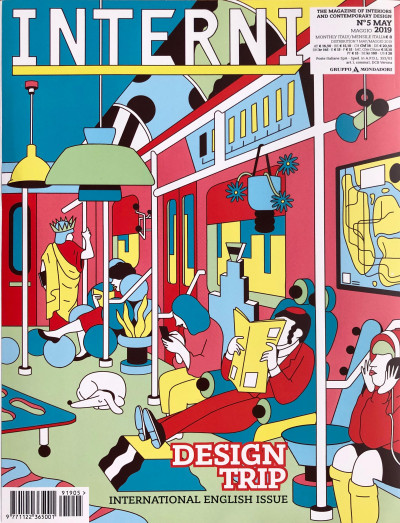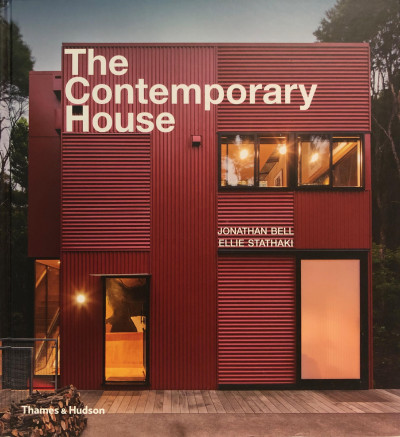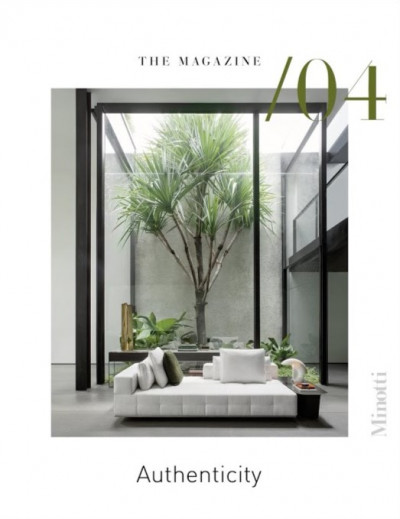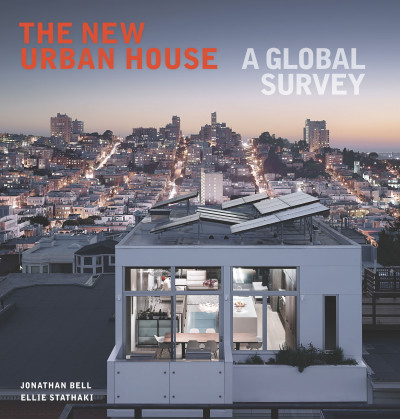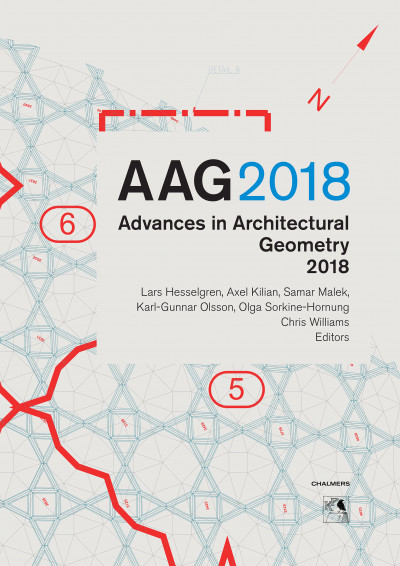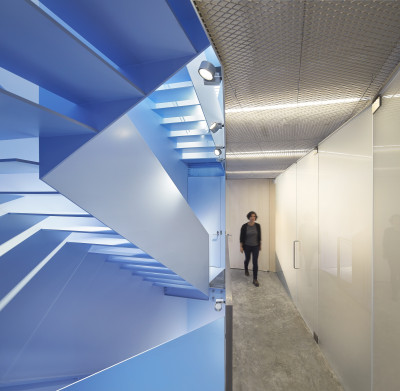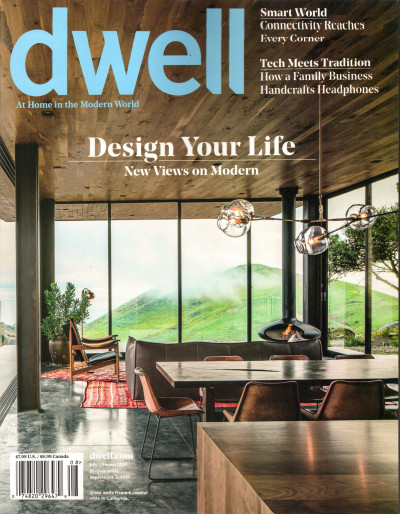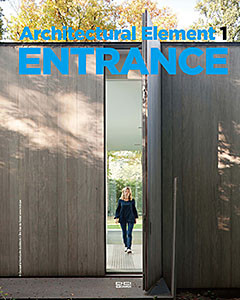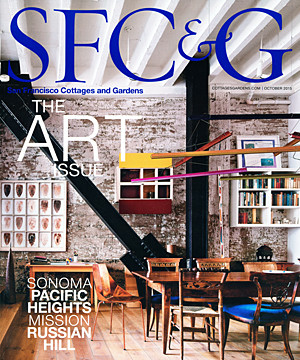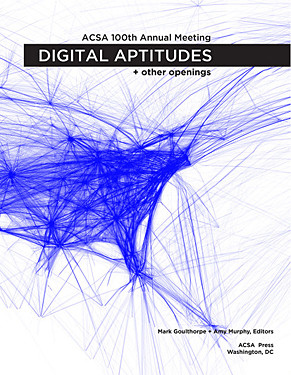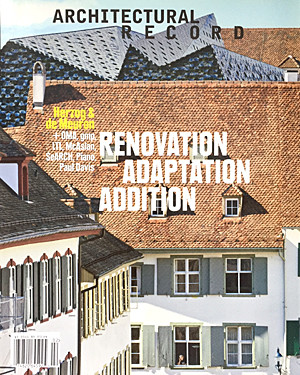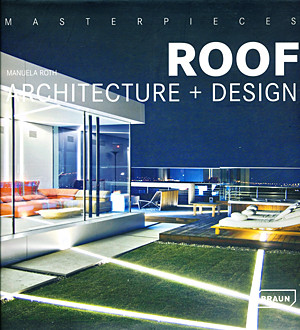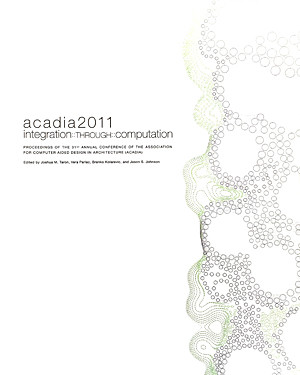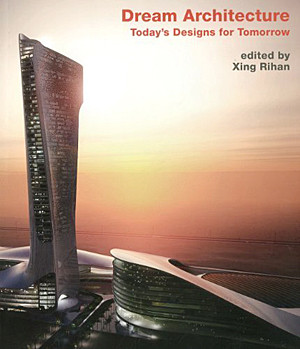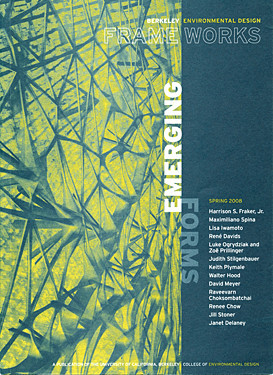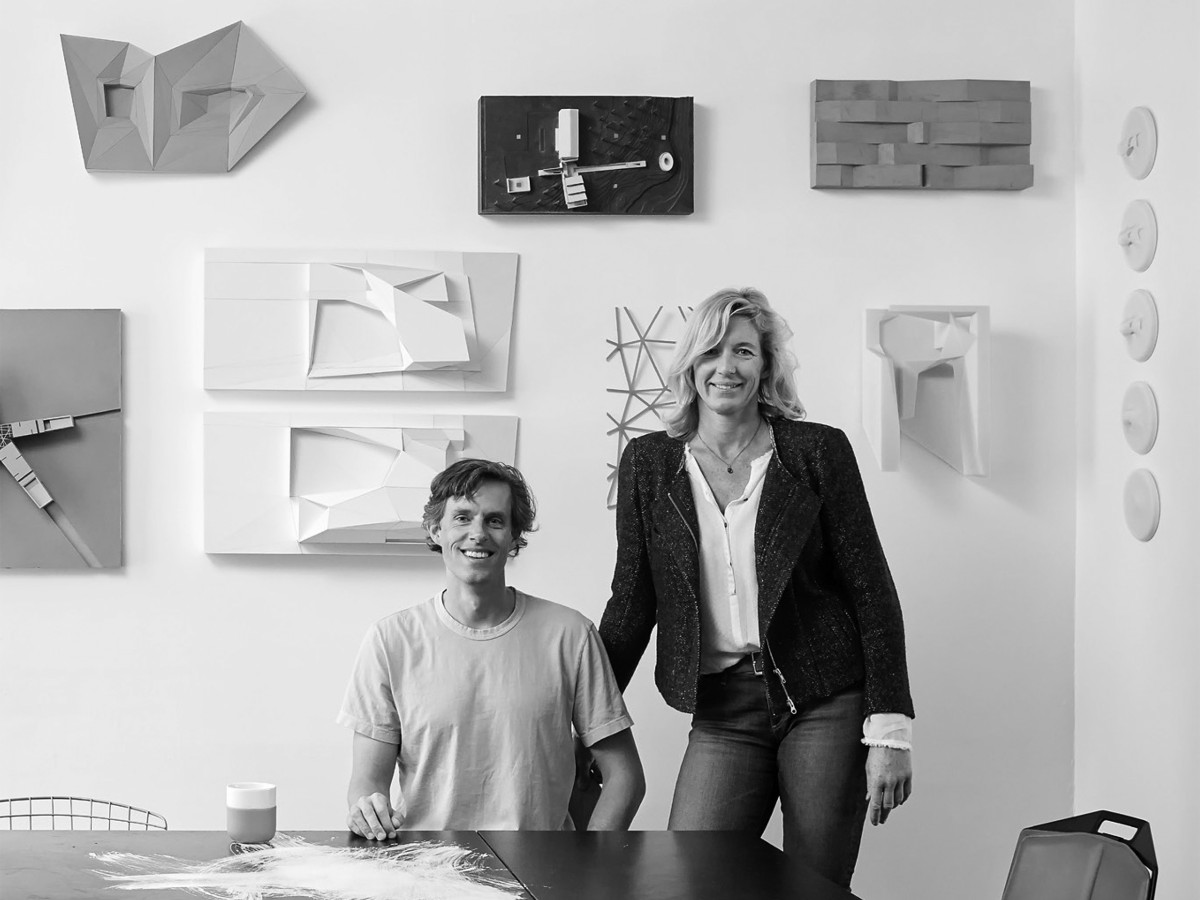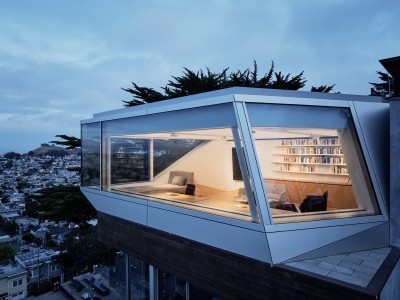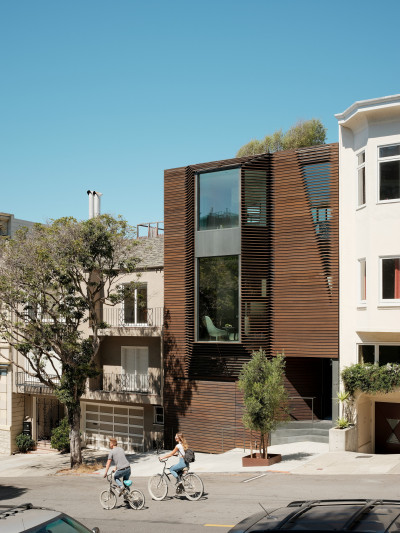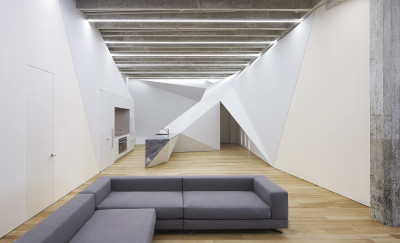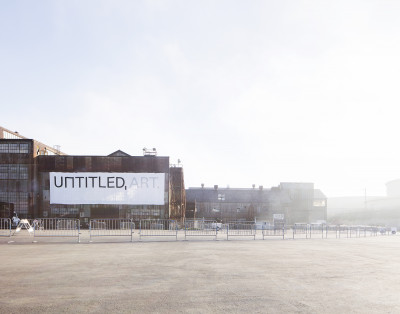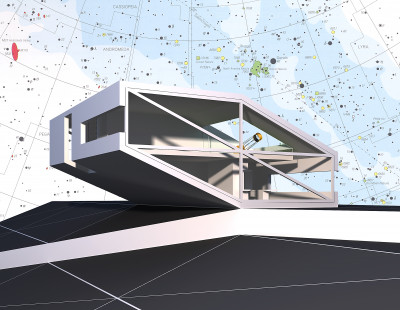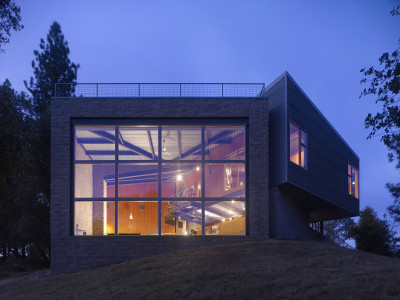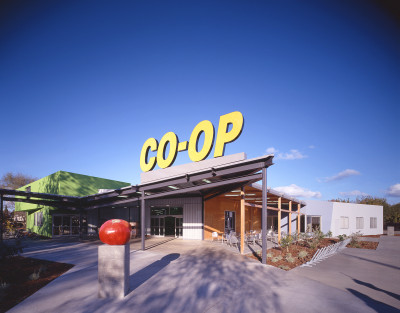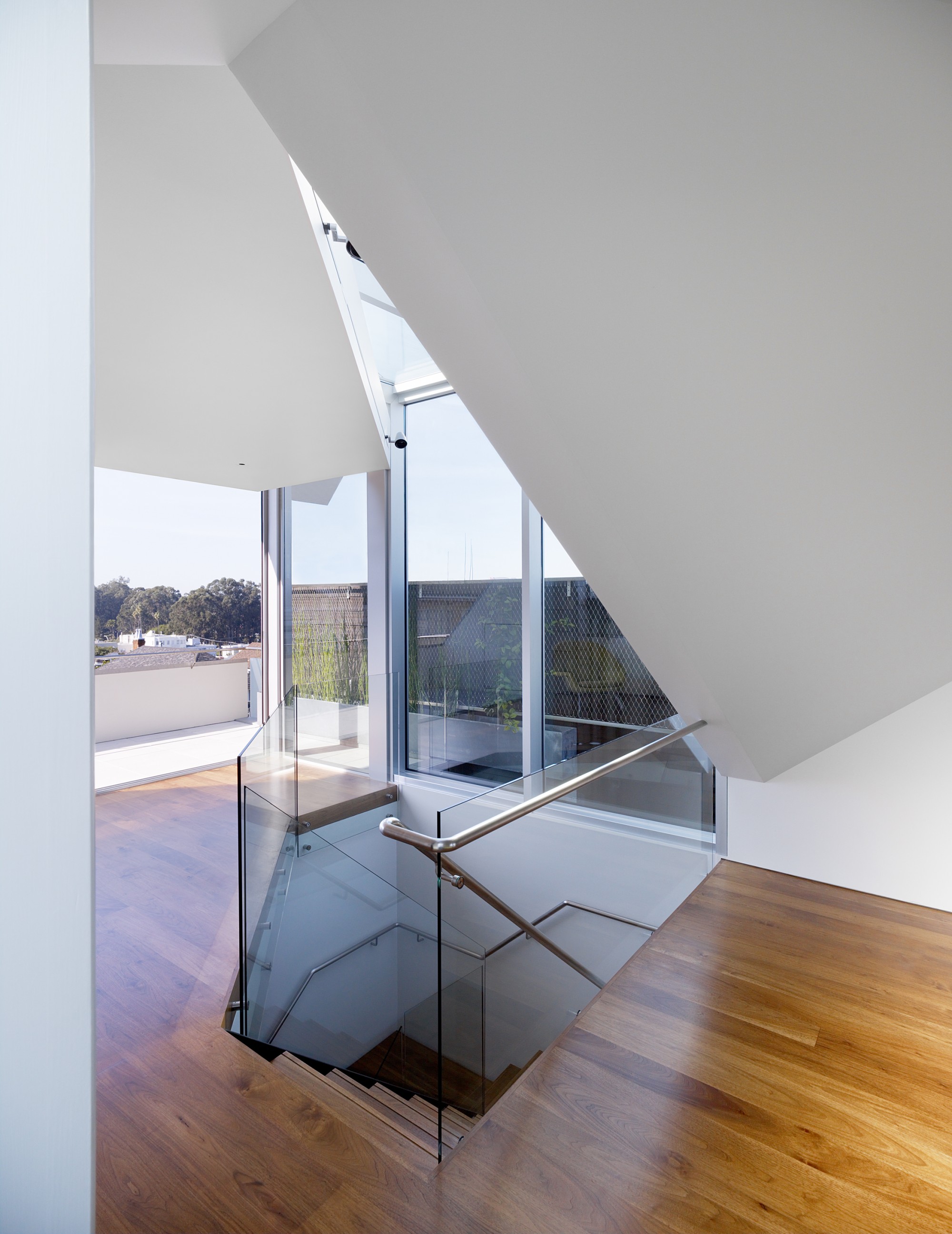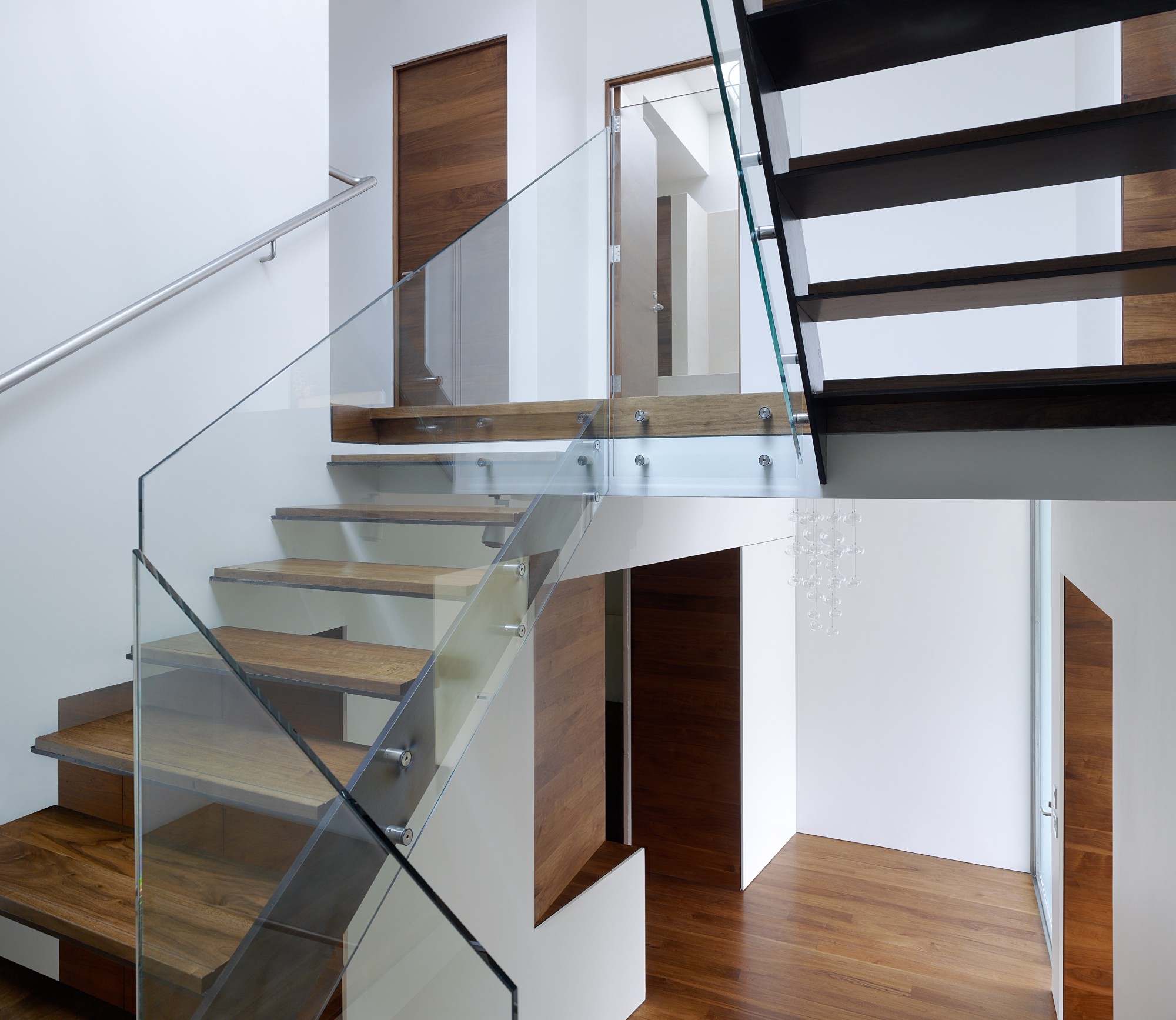This 3,500 sq. ft. project – a comprehensive interior remodel and penthouse addition which opens to views of the Golden Gate and Alcatraz – exemplifies what is becoming an increasingly common aesthetic dilemma in San Francisco. It was born of the tension between the owners' desire for a contemporary home and the San Francisco Planning Department's historicizing planning mandate – in this case with regard to the home's Pacific Heights neighborhood.
The original house was built in 1910, and underwent several remodels and an addition over the last century. The facade was restored to its original Edwardian austerity, and painted a monochrome gray to abstract its crisp restrained ornament. The roof was reworked and clad in zinc-coated copper to match the gray facade, resulting in a quiet and unified exterior that participates innocently in the contextual street fabric. Only a few mild surface disruptions at the entry and the roof hint at the active internal life of the house.
The interior is structured by a geometric transformation that emanates from the core of the house and extends along the primary circulation channels, erupting the placid exterior at points of entry and most violently at the roof. Although the house underwent a full renovation, many of the existing traditional room enclosures were maintained to contrast with the fluid and faceted geometries of the main circulation zone. Several of the more 'traditional' spaces of the house are studded with modern interpretations of ornament and rendered with rich materiality, in contrast to the pristine white of the fully transformed zone.
In addition to all of the floors and casework in the house, every door and door jamb is clad with tongue-in-groove walnut planking to convey the impression that the basic form of the house is a monolithic solid of wood. That 'solid' is then thematically wrapped with painted sheetrock, stone, steel, tile, glass, mirror and upholstered panels in the various rooms for a rigorous layering of finishes and ornament. The ornament spills out of the house into the rear garden, in the form of a parametrically-designed and CNC-milled concrete waterwall that fills an outdoor pond under a new glass-floored deck.
The heart of the geometric disturbance in the house is the three-story stair core. The formal energy of this space distorts the entry vestibule on its way out the front door, and emerges at the top floor with a twisting force that tears off the roof, revealing the whiteness of the new geometry against the monochrome gray of the exterior. In the penthouse, the solidity of the original house evaporates, and the walls and roof open to panoramic views of the San Francisco Bay and the Presidio. The rich and heavy materials of the lower floors give way to white modern surfaces, and the entire space is bathed in light.

